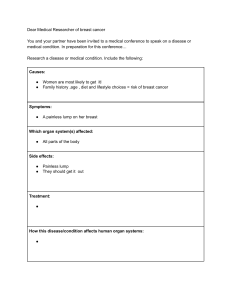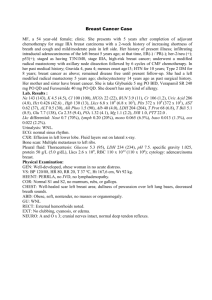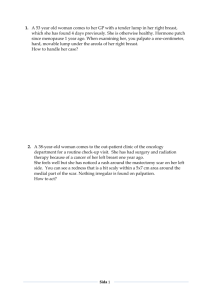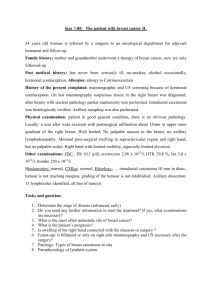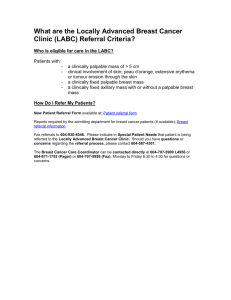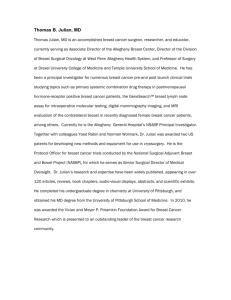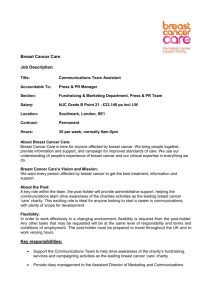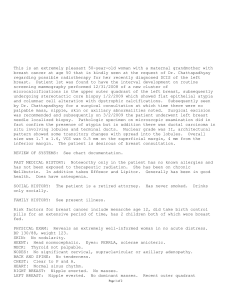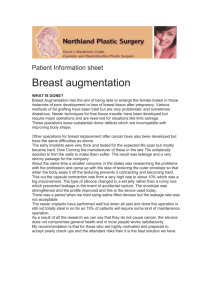BREAST CANCER: The Case of Barbara Allen
advertisement
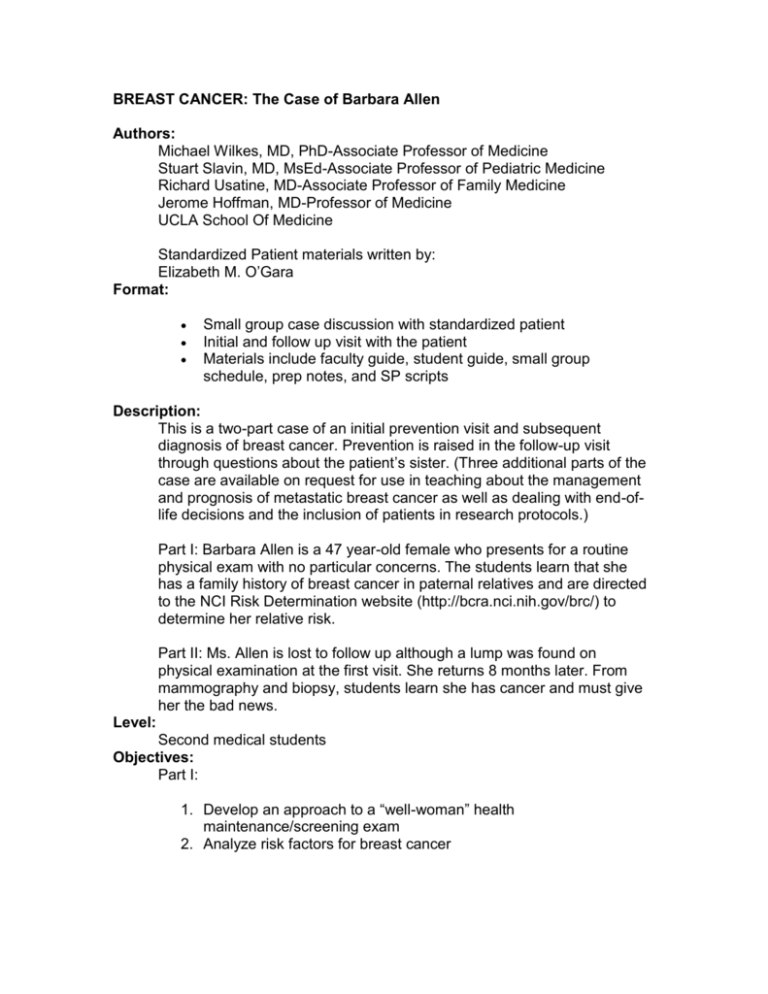
BREAST CANCER: The Case of Barbara Allen Authors: Michael Wilkes, MD, PhD-Associate Professor of Medicine Stuart Slavin, MD, MsEd-Associate Professor of Pediatric Medicine Richard Usatine, MD-Associate Professor of Family Medicine Jerome Hoffman, MD-Professor of Medicine UCLA School Of Medicine Standardized Patient materials written by: Elizabeth M. O’Gara Format: Small group case discussion with standardized patient Initial and follow up visit with the patient Materials include faculty guide, student guide, small group schedule, prep notes, and SP scripts Description: This is a two-part case of an initial prevention visit and subsequent diagnosis of breast cancer. Prevention is raised in the follow-up visit through questions about the patient’s sister. (Three additional parts of the case are available on request for use in teaching about the management and prognosis of metastatic breast cancer as well as dealing with end-oflife decisions and the inclusion of patients in research protocols.) Part I: Barbara Allen is a 47 year-old female who presents for a routine physical exam with no particular concerns. The students learn that she has a family history of breast cancer in paternal relatives and are directed to the NCI Risk Determination website (http://bcra.nci.nih.gov/brc/) to determine her relative risk. Part II: Ms. Allen is lost to follow up although a lump was found on physical examination at the first visit. She returns 8 months later. From mammography and biopsy, students learn she has cancer and must give her the bad news. Level: Second medical students Objectives: Part I: 1. Develop an approach to a “well-woman” health maintenance/screening exam 2. Analyze risk factors for breast cancer 3. Determine how to approach a breast lump (when is immediate intervention / referral / work-up required? When is follow-up / reexamination appropriate?) 4. Appreciate the central role of follow-up in clinical care 5. Discuss the benefits and limitations of shared decision-making Part II: 1. Analyze the "duty" of the physician with patients who fail to followup or fail to comply with recommended treatment 2. Give bad news effectively, including ways of managing patient emotions 3. Assess ways of discussing treatment options in the face of personal uncertainty 4. Understand implications of differences in insurance coverage for various procedures and treatments 5. Develop an approach to preventive measures for high risk patients Cost: Free
